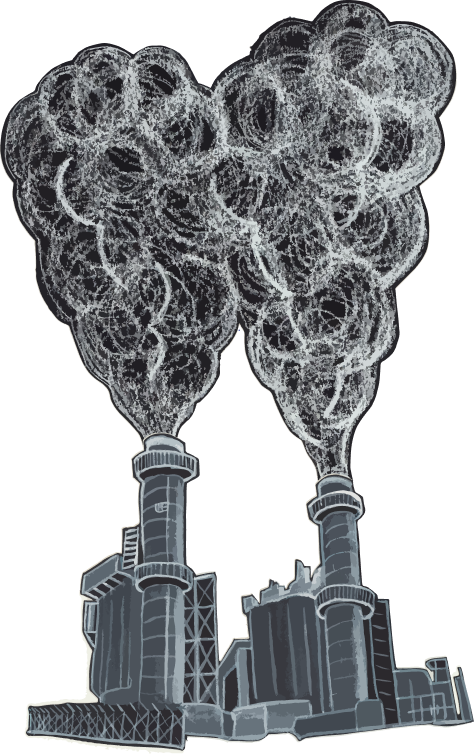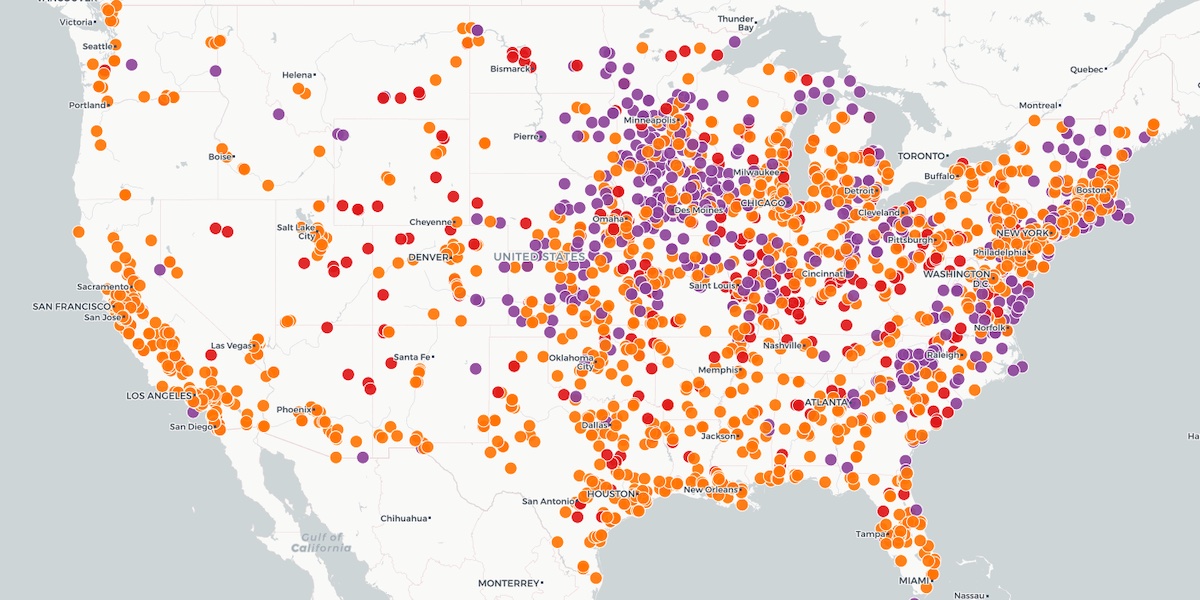West Virginia
Back to mapTo get to zero by 2050, West Virginia must cut emissions by 3.7% a year
Emissions in West Virginia
Million metric tons of carbon dioxide (CO2) [?] equivalent (MTCO2e [?]) emissions
Note: Grey area indicates missing data due to processing delays.
Source: WRI, Mar 2021
This is how we're going to do it
- Boilers and furnaces with heat pumps [?]
- Gas stoves with electric induction stoves [?]
- No-till farming to keep CO2 in the soil
- Capturing methane leaks from landfills
- Capturing CO2 to make emissions-free concrete
- Burning green hydrogen to make emissions-free steel
- Plugging methane leaks from gas pipelines
Decarbonize Our Buildings
3% of West Virginia's climate pollution comes from buildings.
We burn fossil fuels to heat our air, water, and food.
To cut this pollution...
Let's electrify our heat!
We'll replace...
...in all of West Virginia's 1.1 million buildings.
In fact, 46% of appliances in buildings in West Virginia are already fossil fuel free!
That means we only need to electrify the remaining 565,000 dirty buildings in West Virginia. That's around 21,000 per year.
Source: Microsoft, Mar 2021; NREL, Dec 2021Electrifying all buildings cuts 3% of the pollution.
Decarbonize Our Transport
11% of West Virginia's pollution comes from cars, trucks, trains, and planes.
But mostly from cars.
To cut this pollution,
your next car must be electric.
Or consider going car-free with public transit, bikes/e-bikes, car share, or other alternatives!
There are 509,000 vehicles in West Virginia and 600 are already electric (0.1% of the total).
We need to electrify (or replace) the remaining 508,000 gas-powered vehicles. That's around 19,000 a year.
Source: DOT, Feb 2021Electrifying all transportation cuts 11% of the pollution.
Decarbonize Our Power
52% of West Virginia's pollution comes from burning coal, gas, and oil to make power.

To cut this pollution...
Put solar panels on your roof!
Then, we'll replace all fossil fuel power plants with solar and wind farms.

...and find good jobs for those workers.
Current Fossil Fuel Power Plants in West Virginia
10 coal plants
John E Amos
Putnam County
2,933 MW
Harrison Power Station
Harrison County
2,052 MW
Mount Storm Power Station
Grant County
1,681 MW
Mitchell (WV)
Marshall County
1,633 MW
Pleasants Power Station
Pleasants County
1,368 MW
Mountaineer (1301)
Mason County
1,300 MW
Fort Martin Power Station
Monongalia County
1,152 MW
Longview Power
Monongalia County
808 MW
Grant Town Power Plant
Marion County
96 MW
Morgantown Energy Facility
Monongalia County
69 MW
4 gas plants
Ceredo Generating Station
Wayne County
519 MW
Big Sandy Peaker Plant
Wayne County
353 MW
Pleasants Energy, LLC
Pleasants County
344 MW
Axiall Corporation Natrium Plant
Marshall County
123 MW
But wait!
It's not enough to replace our power plants with wind and solar farms.
To power our electric cars and buildings, we need two times the electricity we have today.
In all, we'll need to build 4,000 megawatt (MW) [?] of wind power and 5,000 MW of solar power.
Since the average wind turbine provides 2.75 MW of peak capacity, West Virginia would need to install about 1,000 turbines.
Since West Virginia already has 185 MW of wind and 3 MW of solar, that's 4,000 MW of wind power we need to build and 5,000 MW of solar power. That's around 145 MW of wind power and 185 MW of solar power a year.
Source: EIA, Apr 2022Decarbonizing all dirty power cuts 52% of the pollution.
And gives us zero-emissions power we need to eliminate pollution from buildings and cars!
Other Emissions
The last 34% of West Virginia's climate pollution comes from other sources...
This includes farming, landfills, industry, and leaks from gas pipelines.
There's no one solution to solve these problems, but there are lots of great ideas:
That doesn't mean there's no solution, it just means that clean electrification [?] doesn't help with these problems, and you could fill a whole book with covering all of them. We need to encourage our politicians to invest in researching new solutions and implementing existing solutions to these problems!
Ready to do your part?
Learn how to electrify your own machines and pass local policy to electrify the rest
Take Action